Sandwich pipe - what is this element and the basic
Nowadays, high-performance heating equipment is most often used in homes, for the smooth operation of which, an effective system for removing exhaust combustion products is necessary. If earlier chimneys were made mostly of bricks, nowadays this option is used less and less because of the high cost and laboriousness of construction. The best option today is the sandwich pipe - with your own hands you can quickly make a reliable chimney.
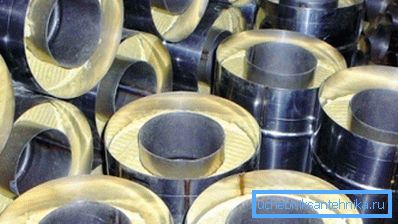
What factors should be considered when choosing a specific design option
Despite its seeming simplicity, sandwich elements vary in a number of characteristics and materials used, so this chapter can be used as a kind of instruction, especially if you purchase already finished products.
| Inner tube diameter | It is a very important indicator, as the chimney draft directly depends on it. The diameter is calculated on the basis of the power of the boiler and its type (as is well known, in the case of solid fuel the number of combustion products is much higher than that of gas and others). Accordingly, the larger the size, the higher the price. |
| Insulation material | Whichever option you choose, it must be non-combustible. The best solution is stone wool, which has high thermal insulation properties and is able to withstand even the effects of open fire, which guarantees the highest level of safety |
| Pipe making material | Most commonly used are two options - regular and stainless steel. The first material has a low cost, but it is susceptible to corrosion, which reduces the service life of products, because the products of combustion have a very high aggressiveness. The stainless steel is much stronger and more durable, but its price is several times higher than ordinary steel |
| Pipe wall thickness | Everything is simple: the more this indicator, the more durable the product. You should not save on thickness, as the surface is constantly affected by high temperature, condensate and aggressive substances, and thin pipes will become unusable very quickly. |
| Insulation thickness | Another important factor that affects the degree of heat of the outer surface, the larger the layer of heat insulator, the lower the temperature of the outer shell |
| Material of the outer pipe | Most often, galvanized steel is used for these purposes - an inexpensive and fairly durable material. You can also use the option of stainless steel, it looks much better, but the cost is very different |

Features of manufacturing and installation of products
A large number of products for chimneys can be found on the market, but their cost is quite high, and such costs are not always justified, especially if the system is being made at a dacha where savings are important. We will look at how to make a sandwich pipe with your own hands and carry out the correct installation of the system.
How to carry out self-assembly of chimney elements
In order to understand the process, consider making a sandwich pipe with your own hands in the form of step-by-step instructions:
- To begin with, a pipe is purchased for the internal cavity, the diameter of which is calculated based on the power and type of equipment. As a rule, the size is 100-120 mm, and for the most powerful equipment options - 150-180 mm. Larger diameters are used in industrial facilities, so it makes no sense to consider them.
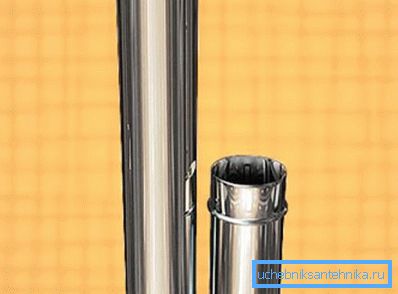
- Next you will need stone or basalt wool to insulate the inner element, the thickness may be different, but it is important to remember that the larger the layer, the safer the construction will be, and the less the outer part of the element will heat up. (See also the article The pipe for the stove: features.)
- The outer case should be selected taking into account the inner pipe and the layer of insulation, the resulting design should provide a dense arrangement of the insulator. Low-cost galvanized steel is most commonly used, you can make the pipes yourself, or you can purchase them in finished form.
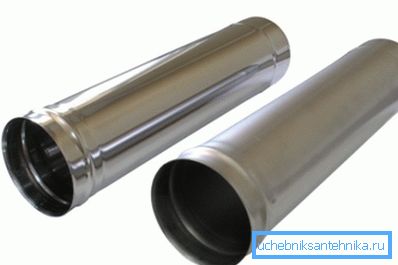
Remember! If a steel pipe is used, it should be thick-walled; for stainless steel products, this figure may be less, since this material is much better resistant to high temperature and condensate.
- The assembly is very simple: a piece of the inner tube is taken, which is carefully wrapped with stone wool. The work is done gradually: the part wrapped in insulation is inserted into the outer pipe section by section. It is important to assemble the elements with the highest possible seal of the heat insulator.
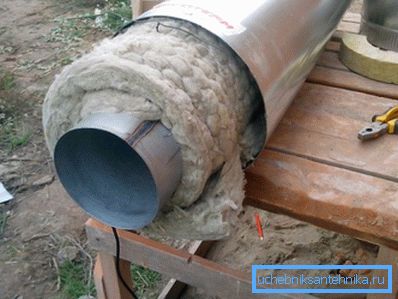
Tip! The main attention should be paid to the joints of the inner pipes, the sockets should be neat and level, sometimes to increase the strength it makes sense to additionally strengthen the connection with clamps.
As you can see, making sandwich pipes is a fairly simple process; it is important that all elements fit together very precisely so that smoke and condensate do not penetrate from the inside of the chimney into insulation or even outside.
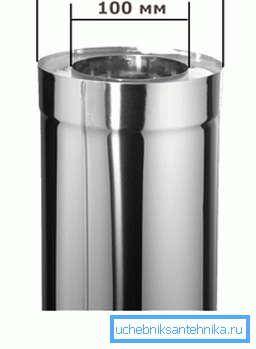
System installation
This stage is also of great importance, since improper installation of the sandwich pipe leads to the penetration of smoke and condensate into the room and significantly reduces the service life of the structure. Unlike pipes for ventilation, much higher demands are made on chimneys, and any violation can lead to a ban on the operation of the system by technical and fire control authorities.
The assembly is performed in the following order:
- Installation is from the bottom up, starting from the boiler. It is not recommended to isolate the pipe section near the boiler; moreover, this part should be removable, as it burns out faster than others, and it will have to be replaced much earlier than all the others.
- As you know, condensate is collected inside the pipe, and to remove it at the turn of the pipe, you can put a tee on which to attach a funnel with a tap to the bottom. It will collect condensate, and you can remove it easily and simply, which has a positive effect on the durability of the entire system.

- Internal elements are installed with sockets upwards, this eliminates condensate leakage.. Each subsequent pipe is inserted into the previous one, thanks to which the liquid flows downwards into a specially designed water collection chamber, from which caustic condensate is subsequently removed.
- To ensure the best reliability of the joints, all mates are additionally treated with a sealant.. And you need to use a heat-resistant version that can withstand temperatures up to 1500 degrees, most often the composition has a red or black color, and on the package a temperature maximum is indicated at which the composition can be used.
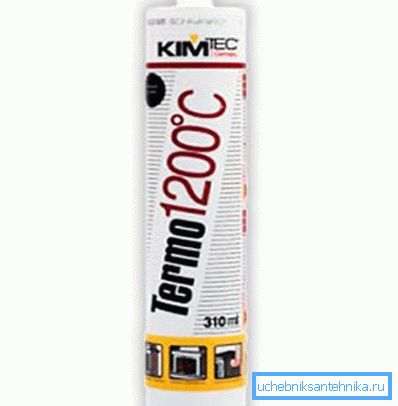
- The outer tubes, on the contrary, are put on each other and fixed with screws or rivets..
- If you need to mount pipes to sandwich panels or other metal sheets, it is best to use special clamps to adjust the distance from the wall.
Conclusion
The use of sandwich pipes allows you to quickly make a high-quality system of exhaust combustion products without the skills of a stove-setter and loads on building structures. The video in this article will help to understand some of the nuances even better.